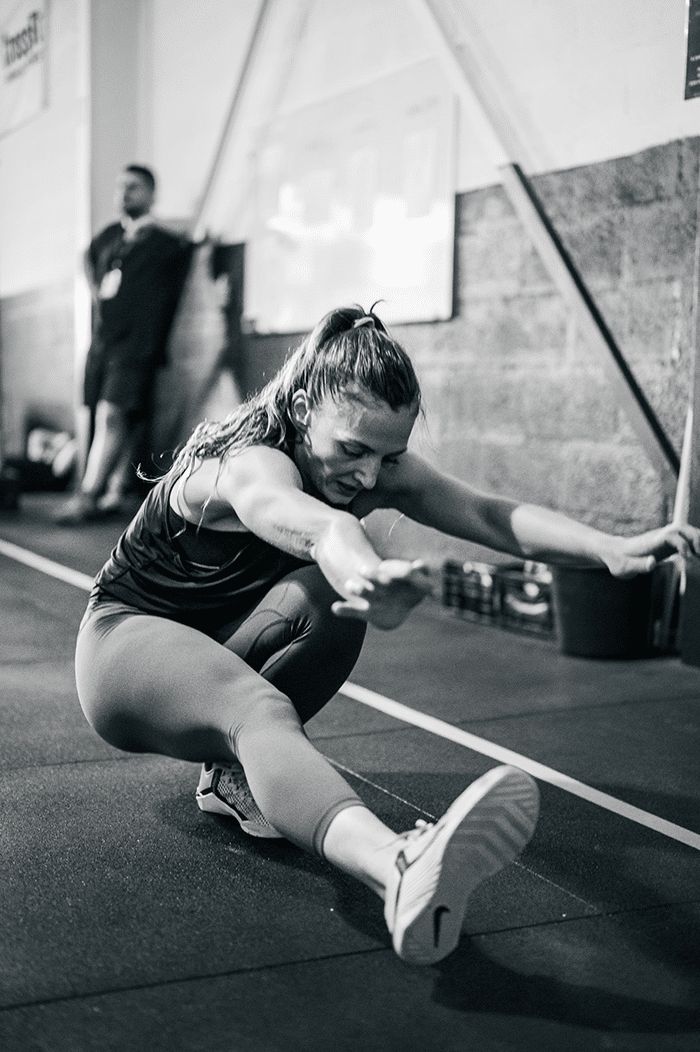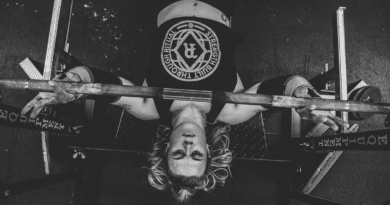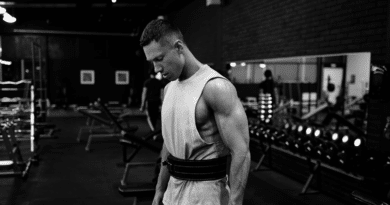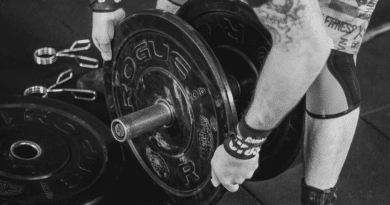Prisoner Squat Exercise Guide – Benefits, Muscles Worked and Technique Tips
This extensive guide will teach you everything you need to know about the Prisoner Squat Exercise.
What is the Prisoner Squat Exercise?
The Prisoner Squat is a bodyweight calisthenics Squat exercise where the hands are clasped together and held behind the head.
It is also know as the Cobra Squat.
It is a variation of the bodyweight or Air Squat.
Why is it Called a Prisoner Squat?
The name comes from the “hands behind the head position”.
Additionally, because it requires no equipment and can be performed anywhere, it can symbolic ties with prison style workouts.
What Muscles Do Prisoner Squats Work?
Prisoner Squats primarily work the lower body, although they do have many secondary ancillary benefits.
Glutes
All Squat variations target the glutes to some degree. This version forces you to keep them tight and strong in order to balance the body and stabilise the overall movement.
Quads
The Quads are used to generate force and propel the body upwards.

Hamstrings
These are important parts of the posterior chain and will be strengthened by the movement of the Prisoner Squat.
Hip Flexors and Other Stabilising Muscles
The exercise does not allow the arms to be used to balance the body during the eccentric and concentric phases of movement.
This means that other stabilising muscles must work harder to prevent a loss of balance.
Core
In a similar fashion to the stabilising muscles, core strength is also essential for balance during the exercise.
The core is also used to generate and control force, and will be enhanced by the Prisoner Squat.
Upper Back and Shoulders
The upper back and shoulders must work to keep the arms and hands locked in the overhead position. This is not a huge burden however it can become tiring during long sets and longer workouts.
Benefits of Prisoner Squats
There is an interesting spectrum of different benefits from performing this exercise.
Enhanced Stability in the Back and Shoulders
Maintaining the raised position with hands clasped behind the head will improve the stability and mobility of the upper back (thoracic spine) and shoulders.
It also forces the chest into an open position and helps to improve upper body posture.
Stronger Legs
As a Squat, this is an effective way to build up the strength of your lower body.

Build Good Squat Mechanics
The overhead positioning of the arms forces the body into a more vertical position whilst the lifter squats.
This is a great habit to get into as it will help when the athlete works more on loaded Squat variations such as the Front Squat.
Build Better Balance
With the traditional Air Squat you can use your arms to balance the movement.
This is not the case with the Prisoner Squat. Having the arms locked into a certain overhead position creates more weight higher from the ground, making the movement feel more unstable.
Your body has to then work harder to balance. This is good because your core, coordination and stabilising muscles will all get more developed.
Alleviate, Counter or Prevent Back Pain
The Prisoner Squat places a great deal of emphasis on abdominal strength and stability.
This, coupled with the upright posture and opened chest, makes the movement an effective way to work against back pain.
A stronger core will always help to lesser the risk of back pain because it also improves posture.
An Effective Conditioning Tool
The Prisoner Squat is a great way to scale up functional fitness workouts that involve Air Squats.
As a low impact movement, Prisoner Squats can easily be used to significantly improve your cardiovascular abilities and strengthen your heart.
Can Be Performed Anywhere
They require no equipment and virtually no space. This makes them one of the most adaptable and easily programmed exercises that exist.
How to Do the Prisoner Squat
Use the following instructions to perform the Prisoner Squat properly.
- Stand up with your feet hip width apart. Point the toes out slightly
- Reach behind your head with both hands and clasp your hands together
- Inhale and brace your core, glutes and quads
- Push your chest out forwards
- Push the hips back and bend the knees to start the descent
- Squat down to at least parallel (all the way down, “ass to grass” is best)
- Keep the knees pointed outwards and don’t let them cave inwards at any point
- Pause for a second at the bottom
- Engage your glutes and quads and explode upwards to the starting postion
- Exhale
- Repeat for the desired number of reps
Training Tips for The Prisoner Squat
Keep the chest proud at all times.
Do not round the upper back at any point during the movement.
When you rise from the bottom position, drive through the heels and not your toes.
Never let the heels leave the ground.
Prisoner Squat Variations
These all work effectively as variations if you want to keep things fun, challenging and fresh in your training.
- Overhead Squat
- Zombie Squat
- Front Squat
- Cobra Squat Hold
Prisoner Squat Alternatives
If you can’t (or don’t want to) perform the Prisoner Squat then consider these alternatives.
- Air Squat
- Sumo Air Squat
- Split Stance Squat
- Goblet Squat
- Suitcase Squats
- Back Squat
- Wide Stance Squat
- Cobra Kang Squats
Prisoner Squat vs Regular Squat
Here we will compare the Prisoner Squat with the regular Air Squat.
| Prisoner Squat | Air Squat |
|---|---|
| Harder to balance | Easier to balance |
| Works the core more | Works the core slightly less |
| Is less common | Is more common |
| Good for Strengthening Legs | Good for Strengthening Legs |
| Can be performed anywhere | Can be performed anywhere |
| Develops conditioning | Develops conditioning |
| Improves back and shoulder mobility | Doesn’t improve back and shoulder mobility |
FAQs
Still got more questions? Scroll through to find the answers.
Are Prisoner Squats Effective?
Yes, they are an effective bodyweight Squat exercise.
They will strengthen the legs and core, enhance upper body posture, reduce back pain, build conditioning and boost coordination in general.
Do Prisoner Squats Build Muscle?
The exercise can build muscle if you are new to training. However, if muscle gain is your primary gain, then squatting with weights will be more effective for overloading the body and stimulating hypertrophy.
Learn More
Try these Back Squat Workouts.





Pingback: The Best Back Squat Workouts for Strength and Muscle - Outdoor Fitness Society